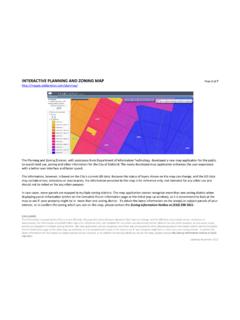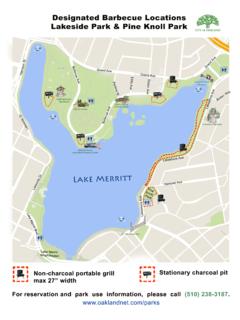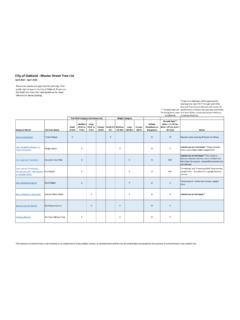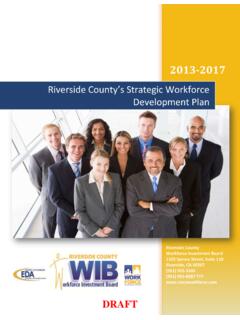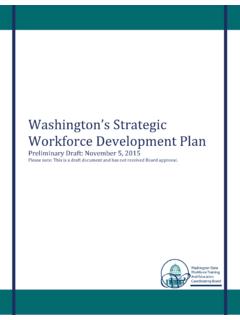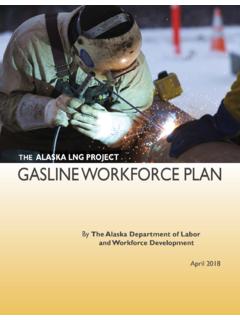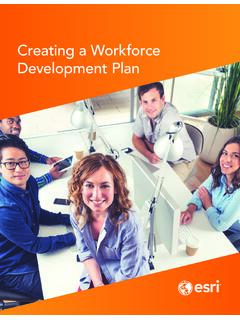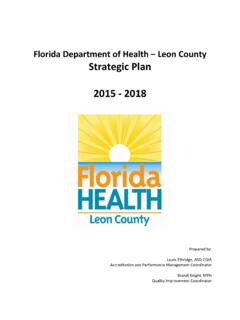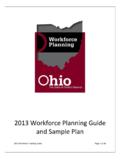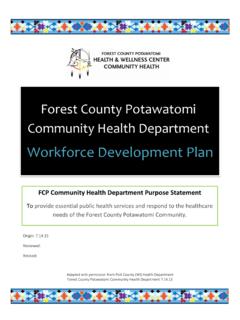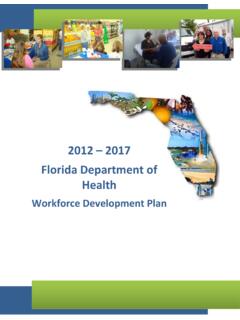Transcription of City Of Oakland Workforce Development Strategic Plan
1 City Of Oakland Workforce Development Strategic plan DRAFT 2017-2020 Local plan 2/2/2017 This draft of the Oakland Workforce Development Board (OWDB) Strategic Workforce Development plan for 2017-2021 will continue to evolve as the OWDB incorporates additional input during a 30-day public comment period that will run from 2/3/2017 through 3/5/2017. 1 A. Vision, Goals, and Strategy of the Local Board and its Partners i. Strategic vision to support regional economic growth and economic self-sufficiency. Current Context: Entering into the beginning of 2017, the City of Oakland along with the rest of the San Francisco Bay Area is experiencing consecutive years of very rapid economic growth.
2 Population and employment levels have expanded well beyond pre-recession levels, with the total number of jobs in the City of Oakland rising from 155,000 in 2010 to 200,200 by 2017. The unemployment rate of residents dropped from a high of nearly 17 percent in 2009 to by the end of 20161. While maintaining and even growing its historic strength as the Bay Area s major health, transportation and logistics hub, Oakland has also gained local and national attention for other industries and attributes: its thriving arts scene, solar and green energy cluster, food production, maker movement, and a unique character and lifestyle that reflects the diverse and engaged population for which the City has long been known.
3 As a whole, local businesses are thriving to such an extent that room to grow has become a challenge, as industrial, downtown office and retail vacancies have all reached record lows. Commercial rents are on the rise, putting pressure on many nonprofits and businesses. Rising market rents for residential and commercial space has spurred new investment in Oakland , but a variety of factors including rising costs of construction have held back Development that could meet new demand. And the Development pipeline is growing. More than 2,000 new housing units are under construction or recently completed, with another 17,000 approved or in pre- Development discussions.
4 And following investments in the rehabilitation and repurposing of pre-existing space for commercial and office uses, new office construction is planned for the first time in seven years. However, just as new economic opportunities seem to be continually arising in Oakland , growth is not benefitting Oakland residents and businesses equally, making the newfound interest and investment in Oakland a mixed blessing. The City s location at the center of the Bay Area, the nation s most thriving and expensive metropolitan region, has amplified pressures on local property market values, resulting in many low-income residents experiencing an acceleration in economic insecurity.
5 To this end, while it has brought positive changes to some neighborhoods, community members and City representatives alike are concerned about Oakland s long-term affordability, diversity, and ability to extend and share economic prosperity. And while unemployment disparities between demographic groups are on the decline for example, African-American unemployment is estimated to have fallen from 25% in 2013 to 9% in 2015 gaps stubbornly persist between different ethnic groups2. And despite an overall rise in employment and wealth, Oakland 's citywide poverty rate of 20%3 has changed little in the last decade and remains higher than the national poverty rate of 15%, pointing to a growth in income inequality within the city.
6 The school district is improving rapidly and has many high-achieving schools, but too many young people still drop out. High crime rates continue, suggesting that many in Oakland are disconnected from opportunities to find quality work. 1 California EDD, , last accessed 1/25/17 2 American Community Survey, 2013-2015. The size of Oakland s African-American population also increased slightly during this time period. 3 Ibid 2 3 Acutely aware of the aforementioned dynamics, in 2014-2016, the City of Oakland took a comprehensive look at the way interrelated departments respond to challenges through the Resilient Oakland Playbook ( ).
7 The Resilient Oakland playbook which takes a more holistic view of community Development , outlining a set of strategies and actions to tackle systemic, interdependent challenges including equitable access to quality education and jobs, housing security, community safety, and vibrant infrastructure. In articulating its goal around increasing economic security, the Resiliency Playbook states Oakland will enable all residents to be economically secure, build wealth, and achieve their full potential, regardless of race or means. Oakland seeks to build a model of responsible economic growth and business attraction, in concert with a commitment to building economic security, especially for those who have historically had limited access to opportunity.
8 Under this framework, the OWDB has the opportunity to help support a number of the goals outlined in the playbook, including engaging supporting community engagement efforts, particularly by enlisting young people in shaping Oakland s future, creating more opportunities for collaborative government, and using data-informed decision-making. To this point, in addition to the Resilient Oakland playbook, there are myriad other initiatives currently underway across the City Of Oakland that have implications for the OWDB s work. There are a number of departments within City Of Oakland that are of great importance to the OWDB s work, including the Mayor s Office, the City Administrator s office, the Planning & Building Department, the Housing & Community Development Department, Public Works, and a Department of Race & Equity.
9 There are also a number of significant citywide collective impact initiatives that are highly relevant to the OWDB as it strives to support better opportunities and outcomes for the City Of Oakland s residents and support a strong business climate. In support of this work, the OWDB recognizes both the opportunity and need to strengthen its ties with some of the neighborhood-based networks of community and faith-based organizations that have aligned resources and interests in improving the quality of life for Oakland s most vulnerable residents. To this end, the OWDB has been giving significant consideration around the larger context of the city s current climate, factors that we believe are well reflected in the goals and Strategic priorities of this Strategic local Workforce Development plan .
10 Ii. Strategy to align resources available to the local area & achieve the Strategic vision The Role and Opportunity of Workforce Development : In 2015, the OWDB conducted a substantial community engagement effort to help advance its efforts to implement major elements of the Workforce Innovation and Opportunity Act (WIOA) in the City of Oakland . In the course of this effort, some key themes emerged that are of importance to job seekers, residents, and service providers, including the following: Oakland job-seekers, workers and employers are navigating a new world of work where rapidly changing technology, recruitment and training systems shift opportunity Job seekers ranked paid and unpaid internships, support groups, opportunities to interact with employers, information about industries and employers, and direct referrals to job openings as important services 4 Oakland employers see a bottom line benefit from hiring locally, and nearly two-thirds of respondents reported a need to hire more people within the six months following this outreach effort.
